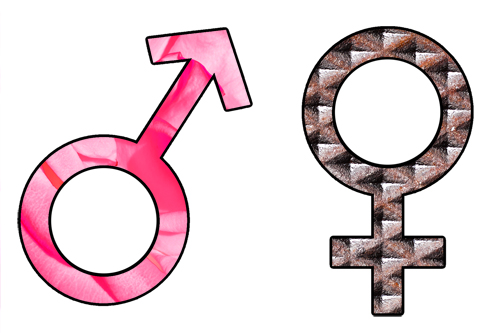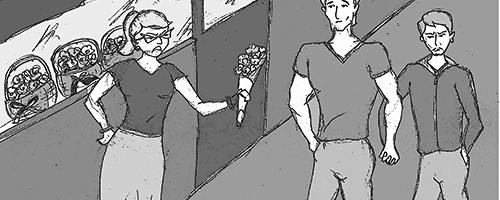What is gender? For some gender is just a way of identifying whatever they’ve got going on between their legs, but the stereotypes associated with gender and sexuality have a substantial impact on our lives.
Gender-swapping

What is gender? For some gender is just a way of identifying whatever they’ve got going on between their legs, but the stereotypes associated with gender and sexuality have a substantial impact on our lives.
Our gender, and the way we label ourselves, has a way of determining how we are viewed and treated by other people. Society has a way of creating stereotypes about various aspects of the way we live. Men are expected to be physically and mentally strong, and not overly emotional. Women are supposed to be nurturing and good at cooking. If for some reason you don’t fit the mold, it’s almost as if something is wrong with you.
However, the idea of gender is constantly changing in the 21st century. Gender is now a moldable concept that is constantly being shaped by the hands of modern society.
Yet even in a society striving for gender equality, a division among the sexes is still present. Gender-swapping elements of American popular culture (simply switching any character or trope of one sex with someone of the opposite sex) can reveal the remaining gender stereotypes in our society and challenge what many people unconsciously associate with a specific gender.
While many of us might not think of sexism as a real issue in the United States anymore, it’s the little things that show us the issue is far from over, like the fact that men make more money than women at the same jobs, and that women are viewed as incapable of addressing serious issues in a logical way as writers or political or religious leaders.
Gender-swapping at its finest addresses the underlying sexism that still permeates American culture in a not-so-serious manner. It is not an attempt to undermine the seriousness of gender inequality, but rather to get people thinking about the issue in different ways.
When you gender-swap superheroes, book covers or fashion models, you realize how ridiculous the opposite gender looks doing these things, and it’s actually supposed to be weird.
If you are thinking how odd a man looks doing this, or a woman looks doing that, the meme is doing its job by revealing the gender stereotypes ingrained in our culture. If they weren’t there, buried deep inside of our collective subconscious, then simply swapping someone’s gender wouldn’t make any difference. Yet it does.
Gender-swapping definitely seems strange, it might even seem funny, and it’s OK if it does. The purpose of gender-swapping is to get people to think and recognize the stereotypes and assumptions that we make as individuals. It’s not an attempt to change what we believe, but rather to get us thinking about why we think that way.
Seeing a spandex-clad man with his body contorted in a weird position and his butt in the air might seem amusing, but the humor is brought on by the difference of the image from what we are used to seeing. Somehow it seems less strange or even less demeaning when a female superhero is posed in a ridiculous way to accentuate her breasts or butt than if a man were doing it. That doesn’t seem like gender equality, does it?
Or say you are walking through a bookstore. You pick up a book. If it was written by a man, it will likely have some abstract or epic-looking piece of art on the cover; but if it was written by a woman, you’re more likely to see a happy couple holding hands or flowers adorning the front. But does that represent what the book you are holding is really about?
Gender-swapping is a very important way to address something that most Americans don’t think of as a problem anymore. We are constantly reminded about the equality that we didn’t have in the past that we have in the present. Women can vote and become CEOs, and have tons more freedom than they did 100 years ago. Yet only thinking of the past causes many people to overlook the things that haven’t been fixed yet. The progress that’s already been achieved is no reason to stop striving for change and
innovation.
Sometimes it takes a joke, a snarky comic or even a story for people to realize that there is still work to be done. Sometimes it takes one gender-swapped picture for someone to realize that sexism is still alive today. But sometimes that’s all it takes to spark a debate or change the way we thought before.





